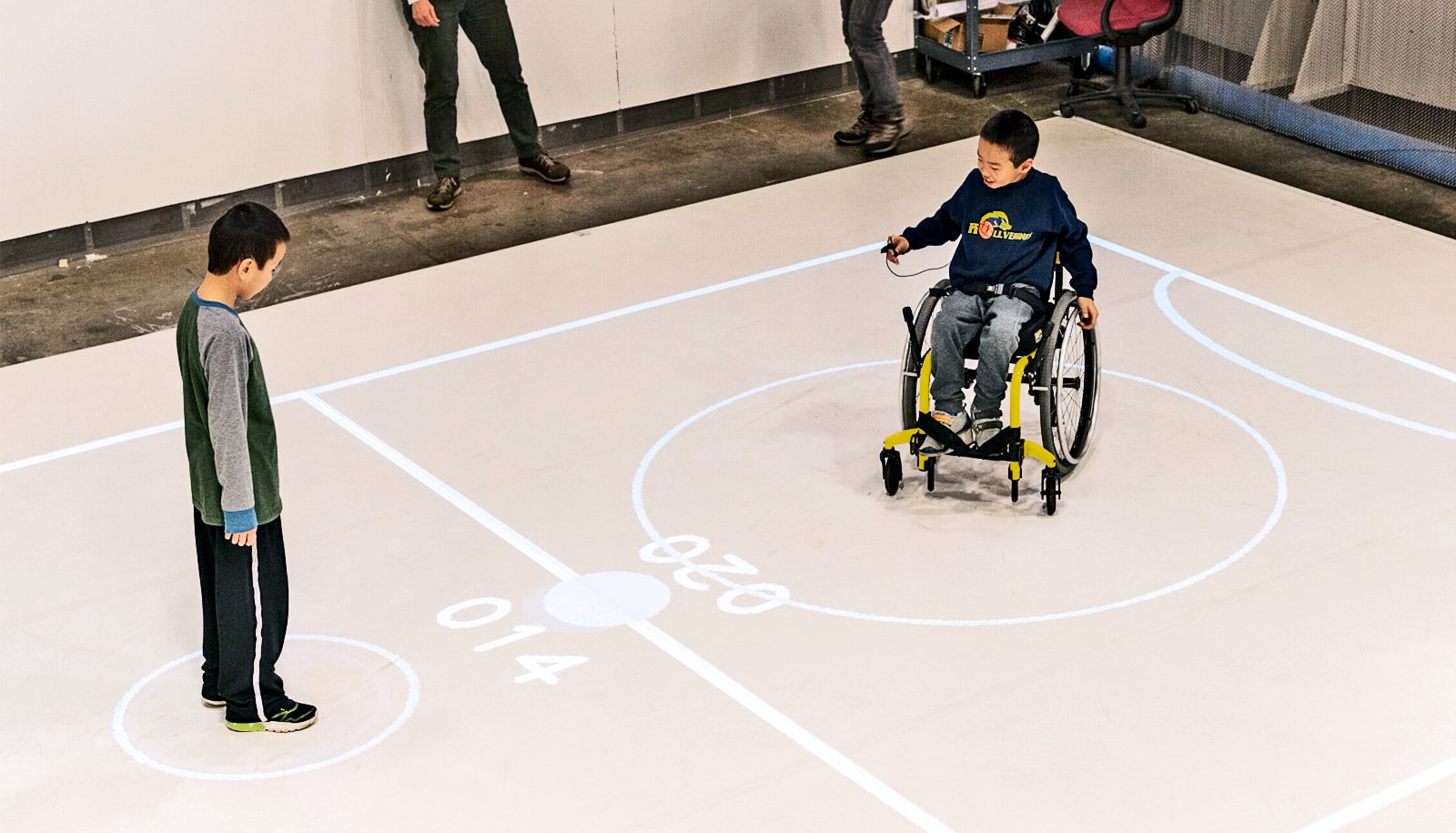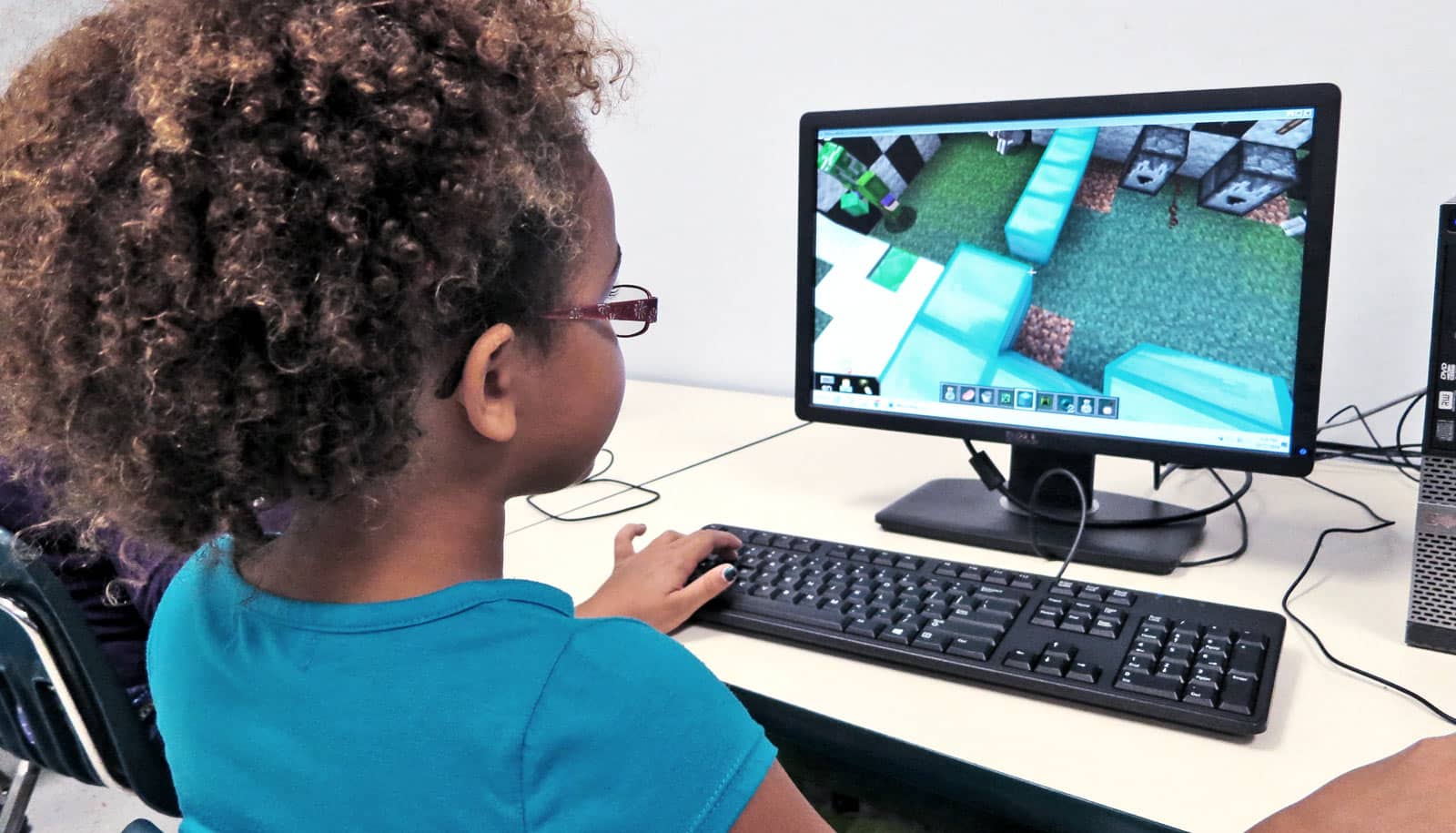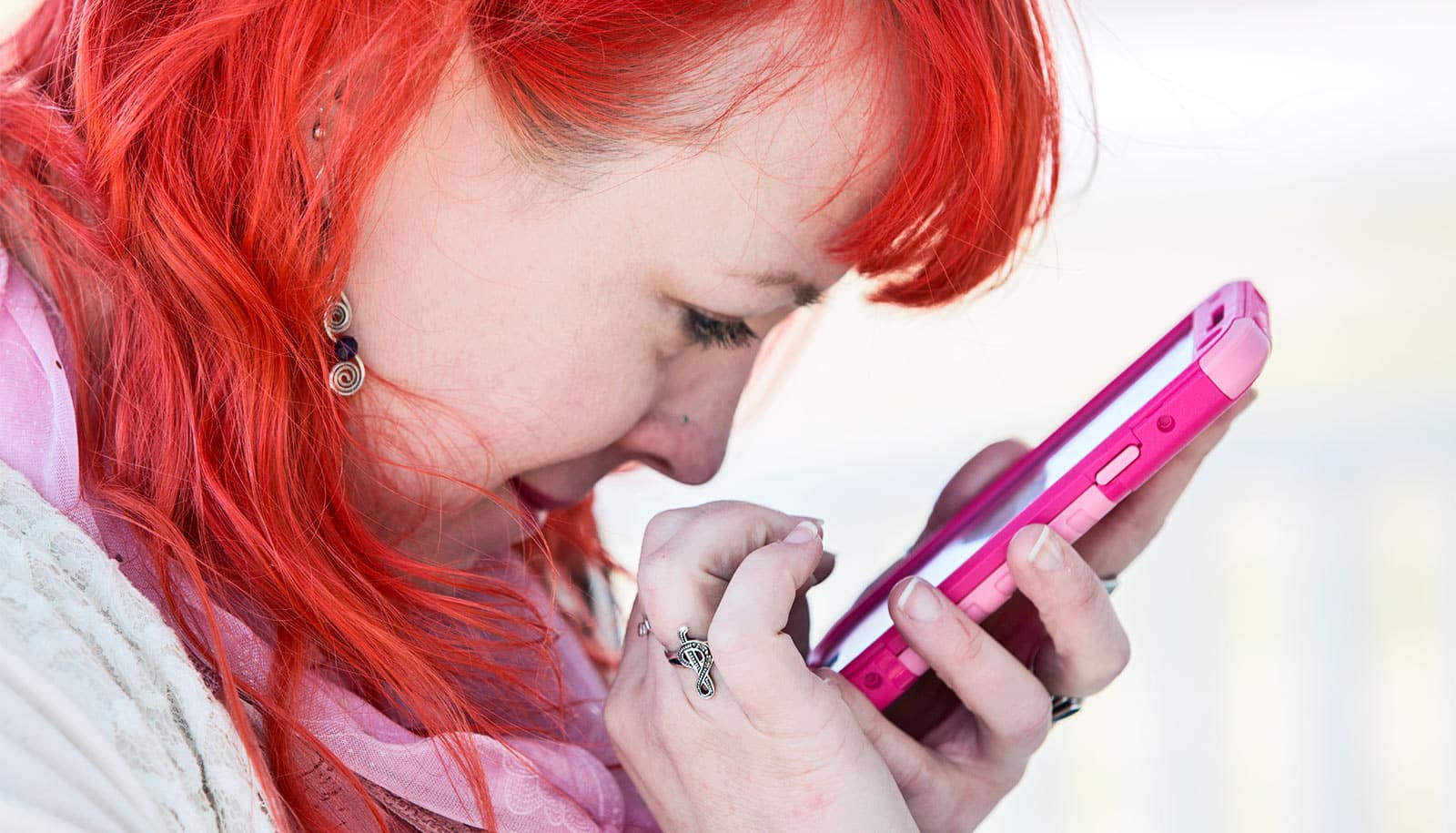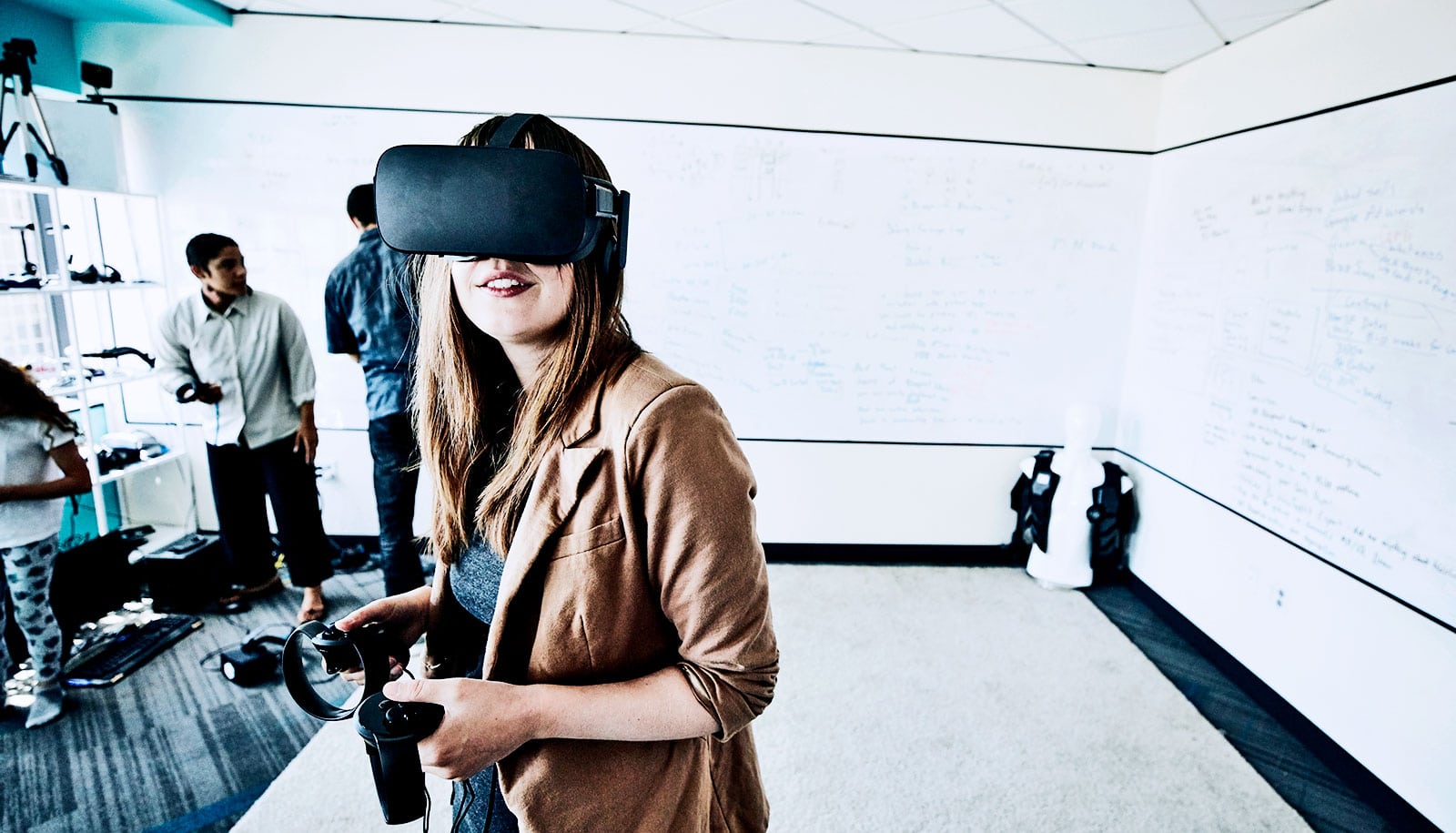A new augmented reality game system called iGYM aims to create a truly inclusive environment for kids with and without disabilities to play and exercise together.
While adaptive sports like powerchair football provide invaluable opportunities for children with mobility disabilities to participate in athletic events, these games are not designed for competitive play between kids with disabilities and those without.
Inspired by a young sports enthusiast with cerebral palsy, a team of researchers led by Roland Graf, associate professor at the Penny W. Stamps School of Art & Design at the University of Michigan, is looking to change that.
Inclusive play with iGym
The current implementation of the system resembles soccer—or a life-size game of air hockey—with two ceiling-mounted projectors projecting a court on the floor with a goal on either side. Upon entering the field, an overhead computer vision camera detects each player and surrounds them with a “peripersonal circle,” which they can use to hit a projected ball or puck toward the other player’s goal.
Players can expand their circle to “kick” the ball by extending their arms, physically kicking, or by pressing a “kick-button” mounted on their body. This simple circle-expanding functionality creates an equitable play experience for kids with mobility disabilities and their peers without disabilities.
“It’s not science fiction. This kind of inclusive, augmented reality can really become a reality tomorrow.”
James Falahee, a teen who uses a power wheelchair, inspired the iGYM system. Graf met Falahee through physical therapist Betsy Howell while seeking feedback on the potential of an earlier technology that he invented as part of Solar Pink Pong, an interactive art installation and street video game.
“James was interested in this project from a sports perspective,” Graf says. “This started our iGYM development effort and our effort to focus on the design space of inclusive play.”
A year later, Graf and his research team had created their first wheelchair-accessible AR prototype that worked much better than expected. Falahee has been a lead play-tester as the project has evolved.
“I think that the iGYM is very cool,” Falahee says. “My experience has been very good so far. I have even been allowed to invite friends to play with me. I think that the chance for disabled people to be able to participate in sports is very important because throughout most of my life I have been forced to sit on the sidelines and watch my friends play sports and games.”
User feedback
Howell also recruited the Kreps family for iGYM “play-testing” as part of a pilot study. Brothers Darren (age 10), Bryan (9), and Henry (6) have enjoyed playing against each other and with other kids in the study. Bryan uses a wheelchair or walker and Henry has limb differences. Though Darren does not have a mobility disability, he has also experienced health complications requiring two open heart surgeries.
“One of the things that’s very interesting about this project is, all kids, or all people, have a competitive spirit at different levels,” says Erik Kreps, the boys’ father.
“My favorite part is that it’s kind of equalized between Bryan and Darren. And I think the kids feel like they’re in a video game.”
He says that Bryan, the second youngest of nine brothers and sisters, would see his older siblings playing soccer and basketball and wanted to join in.
“As he got older, he grasped that he wouldn’t have the same opportunities because he’s in a walker and has a wheelchair,” Kreps says.
“My favorite part is that it’s kind of equalized between Bryan and Darren,” says Sandy Kreps, the boys’ mother. “And I think the kids feel like they’re in a video game.”
Feedback from children participating in iGYM’s development and their parents has continued to shape the augmented reality platform. The kids found the game fun and competitive regardless of their level of mobility, and those with mobility disabilities liked that it could be played without additional equipment.
Further, the children not only enjoy the game but also feel good about their role in the project.
“I think that it is a great honor,” Falahee says. “The game will bring so much fun to so many people and to think that I was a part of it is such a privilege.”
The future of augmented reality play
As the researchers continue to refine the algorithm behind the game, they are testing out new features.
The most recent edition included red and green targets, which, when players hit them with the puck, temporarily removes the corresponding goal. As Bryan Kreps described it, “if it hits the green, the green side will go ‘poof,’ and they can’t score on you.”
In the future, the iGYM platform may be used for games other than air hockey—Graf is interested in developing an interactive obstacle course or human-size Pac-Man game.
With an excitingly fresh meld of video games and traditional sports, it’s perhaps unsurprising that as playtesting has continued, the children have grown increasingly thrilled for opportunities to play iGYM, the researchers say.
Michael Nebeling, an assistant professor of information, describes parents driving several hours to bring their kids to “play day” events. Amy Whitesall, a graduate student involved in user studies and “play tests,” notes that many families would arrive early.
“It’s been really rewarding to see a lot of these kids who didn’t know each other before say, ‘Oh, I want to play with him again,'” Whitesall says.
According to Graf, iGYM is entirely unique. “Currently there is nothing like iGYM,” he says. “Other accessible gaming technologies are either limited to small screens or developed for people with cognitive disabilities.”
iGYM currently exists as a research prototype, but Graf and the research team are seeking partners to bring the system to market.
“Our vision with the system is to make it as simple and affordable as possible so it can be installed and switched on like any video projector or light fixture in a school gym or community center,” Graf says.
While further work is necessary before iGYM is ready for broad distribution, Graf says that implementing the system does not require custom hardware. It’s mostly a software engineering challenge that comes down to finding the best approach to scale up the platform, potentially using open source models, he explains.
“It’s not science fiction,” he says. “This kind of inclusive, augmented reality can really become a reality tomorrow.”
The U-M Exercise & Sport Science Initiative supported the iGYM prototype.
Source: University of Michigan



